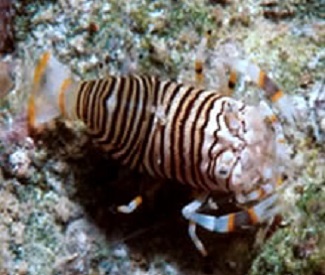|
Description
The Bumble Bee Shrimp, Gnathophyllum americanum, are small shrimp also called the Striped Harlequin Shrimp, it is a species of shrimp that is common throughout tropical lagoons, bays, and reefs in the Indo-Pacific. Similar in coloration to a brightly coloured bumblebee, with blue highlights, the striped bumblebee shrimp can grow up to 1 inch in length. The legs and tail may also have orange markings. The Bumble Bee Shrimp is best kept as pairs in a small nano aquarium with moderate light to accommodate easy viewing. Bumble Bee Shrimp may also be suitable for smaller reef aquariums with other very peaceful inhabitants and no boisterous species being present.
Diet and Feeding
The feeding habits are like the Harlequin shrimp, they love to feed upon the tube feet of echinoderms (star fish), but they do not require them for survival. Offer them pieces of frozen meaty foods such as brine or mysis shrimp, cockle, or small pieces of fish. Feed at least once per day.
Level of Care Due to the Bumble Bee Shrimps small size, care should be taken when introducing them into the aquarium as there is a potential that other marine life may eat them.
Reef Compatibility With Caution
|



